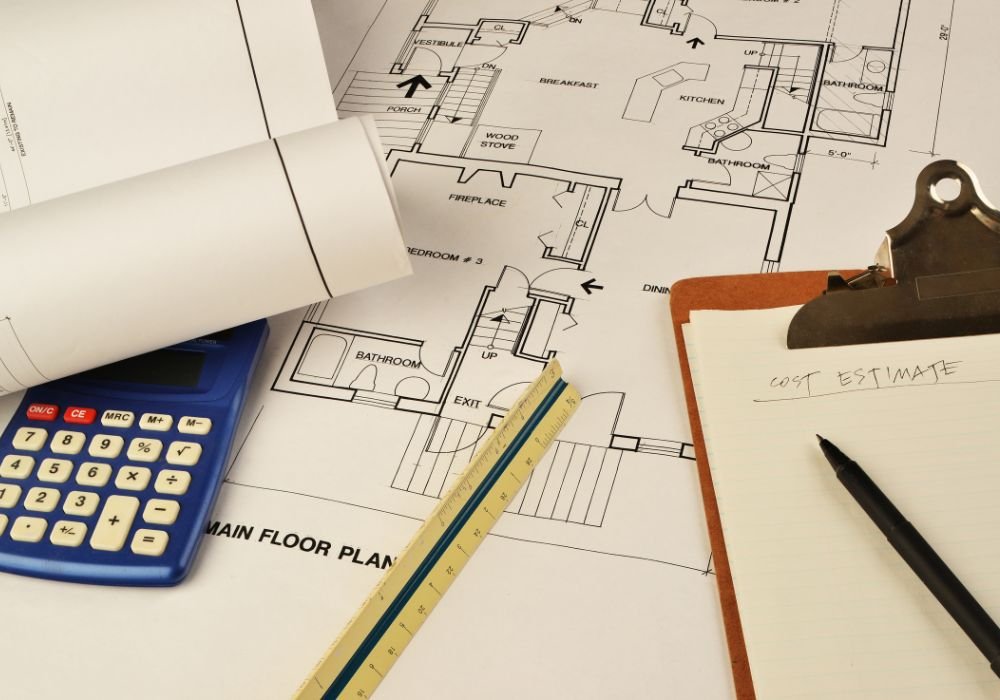Construction estimating is the process of estimating the cost of a construction project. It is an important part of any construction project because it helps to ensure that the project budget is sufficient, and that the project is completed on time and within budget. It can be done manually or through software.
Manual construction estimating usually involves drawing estimates based on a survey of the site and taking into account things like soil type, building size, number of floors, etc.
With software-based construction estimating, you can use information like photos, blueprints, specifications, and recent market data to make more accurate estimates. Regardless of how construction estimating is done, it is important to have a well-organized plan and accurate estimates in order to avoid costly mistakes.
Construction estimating is an important part of the construction industry. Estimates help contractors and subcontractors plan their work and budget for their projects. They can also use estimates to determine how much money they need to bring in order to meet their obligations to the client. It also helps ensure that the project is completed on time and within budget.
Types of construction estimates
Conceptual estimates:
Conceptually estimating a project means making a guess based on what has been seen or what is known about the project. This can include things like actual costs from similar projects, analysis of drawings and specifications, and experience with similar types of construction projects.
Even though conceptual estimating is one of the most common ways to figure out how much a construction project will cost, it can be hard to do. Factors that can influence an estimate include: complexity of the project, scope changes requested by clients or subcontractors, unique features of the building or structure being constructed, and regional variations in construction costs.
Rough order of magnitude estimates:
A rough order of magnitude estimate (ROM) is a tool that is widely used in construction. It is simply an estimation of the cost of a project that ranges from 1 cent to 10,000 dollars. An estimate within this range can be very useful for planning and budgeting purposes. For example, if you are estimating the cost of painting a room, you could use a ROM to determine how much it would cost to paint the entire house using each color.
Another reason why a ROM can be helpful is when there are multiple options for completing a project. For example, if you have two choices for installing carpet in your home, you might use a ROM to help choose which option would be cheaper.
Detailed estimates:
It is a type of construction estimating that takes into account specific details about the project, such as dimensions and materials. This kind of estimating is usually used for projects that have a high degree of complexity or that involve unique situations. It can be very time-consuming to prepare, but it can help avoid costly mistakes down the line.
Components of a construction estimate
When building a structure or repairing an existing one, it is important to have an accurate estimate of the cost. There are many different factors that go into estimating the cost of a construction project, such as materials, labor, equipment, and overhead costs. Here are some key components of construction estimating:
1. Materials: When estimating the cost of materials for a project, it is important to consider the type and quantity of each item required. For example, if constructing a wall, it is necessary to know how much concrete and rebar will be needed, as well as the types of rocks and mortar that will be needed to complete the job.
Labor: Skilled workers are needed to build something or fix something that is already there. The amount of labor required for a particular project can vary significantly based on such factors as the task’s size and complexity.
3. Equipment When estimating the cost of a major project, it is important to consider the amount of equipment that will be needed to complete the job. For example, if you are building a house, it is necessary to plan for the following:
- Materials and equipment needed to build a foundation
- Roofing materials, including shingles, gutters, and downspouts
- Paving materials including asphalt or brick
- Electrical wiring and outlets
- Pl umbing, including drains, water lines, and faucets
- Windows and doors
- Paint and other construction materials.
4. Overhead and profit:
Overhead costs can include such things as rent, salaries, insurance, and taxes. Estimates are also typically broken down into time and materials. Time estimates reflect the amount of time it will take to complete the task, while material estimates list the estimated cost of each type of material needed.
Factors that affect construction estimates
Location of the project:
Location is one of the most important factors that affects construction estimates. The following are some examples: If a project is located in a densely populated area, the cost of materials and labor will be higher than if it is located in a sparsely populated area.
If a project is in an area that is hard on the environment, the cost of fixing the damage may add to the total cost of the project. If a project is near major highways or transportation routes, travel costs will be higher than if the project is in a more remote area.
Size and scope of the project:
It is important to understand the size and scope of a project before starting to make estimates, as this will affect how much time and money will be spent on certain aspects.
A common way to determine the size and scope of a project is to break it down into its individual parts or tasks. After figuring out what these tasks are, you can make an estimate for each one based on your experience, knowledge, and research. It is important to keep in mind that construction estimating is an inexact science and there are often variations between estimators.
Weather conditions:
It can have a significant impact on construction costs. For example, if it is raining when contractors are scheduled to start working, they may need to wait for the weather to clear before starting. This can add hours to the project timeline, which would then need to be factored into the estimated cost.
Additionally, if the weather is hot and sunny outside but cold and rainy inside, contractors may have to use more energy to work in hot weather than in cold weather. This would also have an impact on the estimated cost. Most of the time, contractors will include in their final estimates any changes that happen during a project because of the weather.
Complexity of the project:
Construction estimating is a complex process that can affect the final cost of a project. There are many factors to account for, including the complexity of the project, materials used, and labor hours needed. This can lead to inaccurate estimates, which can cause problems down the line. To ensure accurate estimates, builders need to take into account a variety of factors. This can be difficult, however, and often leads to delays in construction projects.
Methods of construction estimating:
- Quantity takeoff – Quantity takeoff estimates take into account factors such as site size, number of workers, and types of materials required.
- Unit price estimating – Unit price estimates also factor in cost per unit, which helps to determine how much it will cost to build a particular project.
- Analogous estimating – It uses previous experiences with similar projects as a basis for estimating future work. This can be helpful when there is little or no data on which to base an estimate.
- Three-point estimating: contractors often use this method by using three points: price, time and material. Price is estimated by multiplying the number of hours required to complete the project by the prevailing wage rate for that type of work in that area. Time is estimated by multiplying the number of hours required to complete the project by the rate for overtime in that area. Material is estimated by multiplying the cost of materials required for the project by the weight of those materials.
Tools used in construction estimating
Construction estimating is an important part of any construction project. It helps keep costs down, and ensures that the project moves forward in a timely manner. There are many tools that are used in construction estimating, and each has its own advantages and disadvantages.
- Spreadsheets – One of the most common tools used in construction estimation is a spreadsheet. It allows for quick calculations and easy tracking of progress. They can also be modified as needed, which makes them versatile tools.
- Estimating software: It includes creating estimates based on multiple assumptions, allowing users to add notes and comments, and producing graphs and charts that can help make comparisons between estimates.
- Cost databases – It allow for accurate tracking of all costs associated with a particular project. This information can then be easily accessed during the bidding process or at later stages of the project to ensure accuracy and efficient management of resources.
Best practices for construction estimating
Construction estimating is an important part of any construction project. Estimates must be accurate and detailed to ensure that the correct materials and labor are used, and that the project meets deadlines.
Estimate all materials and labor in advance. It will help to avoid any shortages or overages, and will ensure a more accurate cost estimate.
Use accurate measurements when making estimates. Using consistent units will ensure accuracy throughout the entire project.
Estimate each task’s complexity level accurately. It will help to determine how many workers are needed for each task, as well as how much time they will take.
Make sure all data is backed up with documentation before submitting an estimate to the client. It will help to avoid any disputes down the road about costs or scheduling changes on the project.
Common pitfalls in construction estimating
Construction estimating can be a very daunting task for anyone. It’s important to know about the common mistakes that can cause estimates to be wrong. One of the most common mistakes is underestimating material and labor costs. If you’re not careful, you may end up with a project that’s significantly over budget and behind schedule.
Another common mistake is not taking into account changes or additions that might be made to the project. By thinking about these possible problems ahead of time, you’ll be able to make accurate estimates and avoid costly delays.
Always have a backup plan in case things go wrong – you never know when something will come up that throws your original schedule off balance.
Bottom Line
Accurate construction estimating is essential to the success of any project. Without accurate estimates, contractors and designers can waste time and money on inaccurate or unnecessary work. Proper training and resources are necessary to produce accurate estimates, and it is important for professionals in the construction industry to stay up-to-date on the latest techniques and methods.




